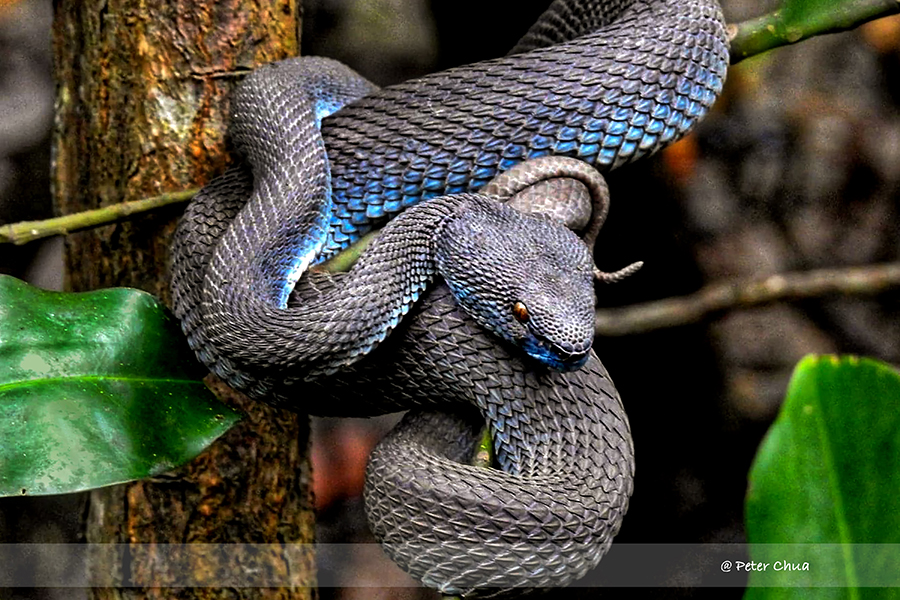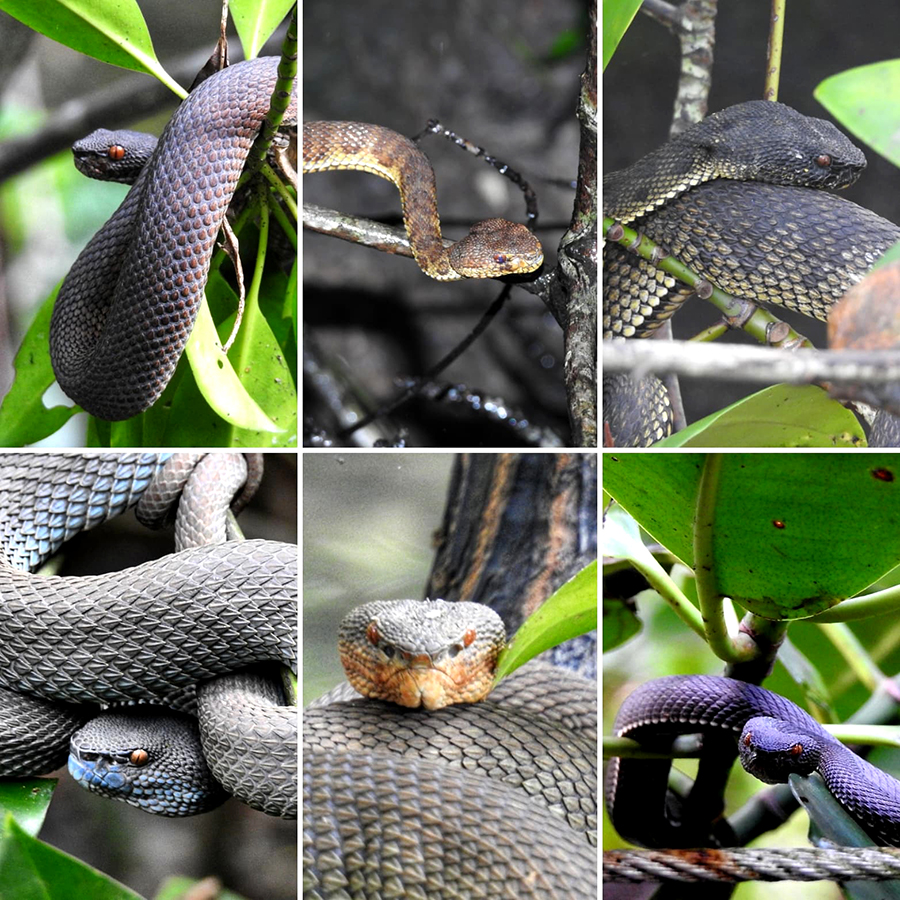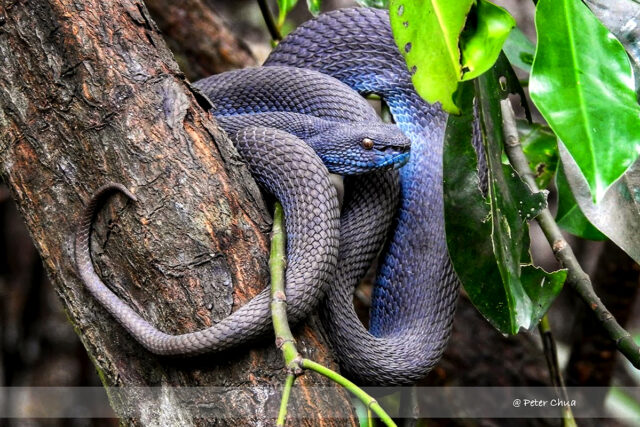I joined some nature groups on Facebook and I saw someone post the shore pit viper snake with a nickname ‘Blu’.
I was curious about it. After discovering about “Blu” , I acknowledged that its nickname was given by Peter Chua.

Shore Pit Viper C. Purpureomaculatus was first coined by the original describer John E Gray in 1832 because of the purple spots on the particular specimen he was describing, although we now know that body pattern and coloration is variable in this species.
This is our ‘Nature talk’ with him.
Peter, can you let us know how you met ‘Blu’ and why did you name it ‘Blu’ ?
I first met “Blu” in December 2017, at Pasir Ris. However, I can’t confirm that she is the only viper in Pasir Ris Park (PRP) mangrove that has that bluish stripe.
I named it “Blu” because this viper has a bluish stripe on its flanks.
I gave this name for easy identification and reference. For example, we have a community here in Pasir Ris Park. When we meet each other, we exchange sightings. It’s easier to describe it if it has a name.
Is there many other type of shore pit viper that any other colour than blue?
Many other colour variations of shore-pit vipers were spotted in PRP, other than ‘Blu’ there are also “Olive” and “Rusty” but to-date I have not name all of them yet.

For the visitors to the park, what do they need to do if they encounter snake?
Important for park goers to be mindful when they are walking along the boardwalk of the mangrove. Sometimes the vipers may be resting on wires or the boardwalk. During the walk, please be aware of your surroundings, minimise the noise, and avoid looking at your handphone, as along the boardwalk you may see any wildlife animal or snake.
When you see the pit viper snake, remain calm, and try not disturb them. Most of the pit vipers are not active during the day, as it is time for them to rest.
Sometimes, snakes may be in a dangerous position such as in the middle of boardwalk. It potentially may cause harm to humans as well as itself, so please kindly contact NParks or ACRES.
Otherwise, leave them alone and they will usually go away at night.
What is the dos and don’ts when visitors want to take photos of the snake?
If you would like to take photos of the snake, especially for photographers, please capture the photos of what you see and make sure you keep a safe distance. Please do not disturb them by using sticks or by throwing something to the snake.
Some photographers have the habit of prodding snakes with sticks to get good photos. Please don’t do this.
You are stressing the snakes who are resting as well as denying fellow park photographers from shooting the snakes (because if you disturb them, they will move away).
Please note that all tips and advice are based on observations and not scientific studies.
We are trying to learn and understand our nature and wildlife and try not to disturb them.
“Take nothing but memories, leave nothing but footprints!” Chief Si ahl














